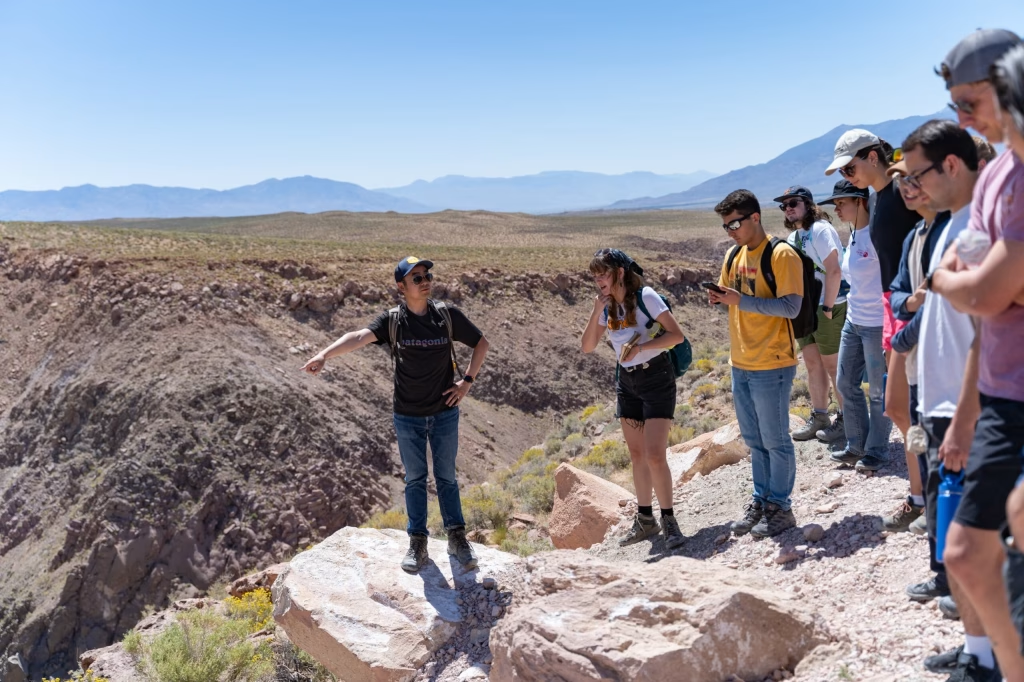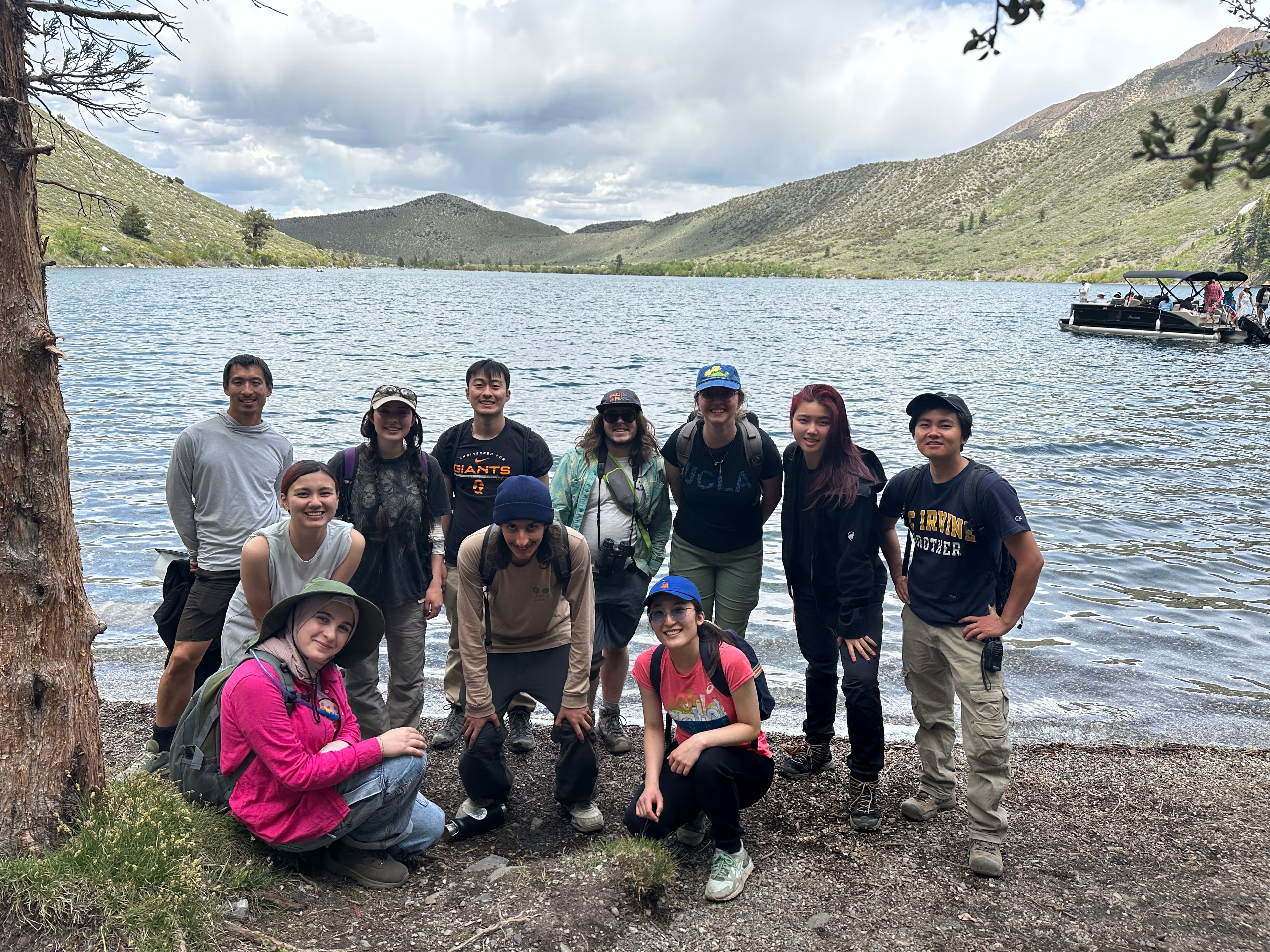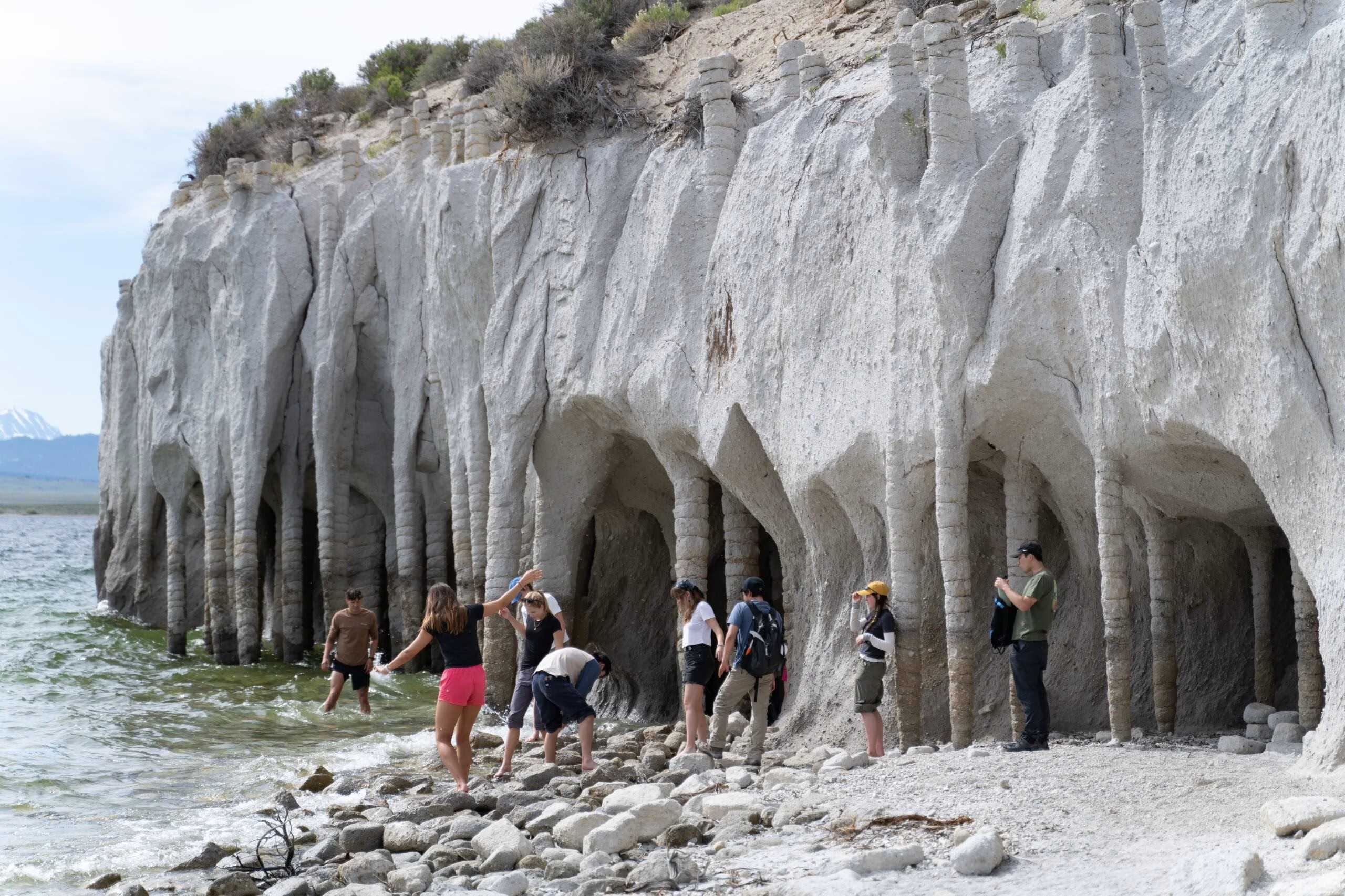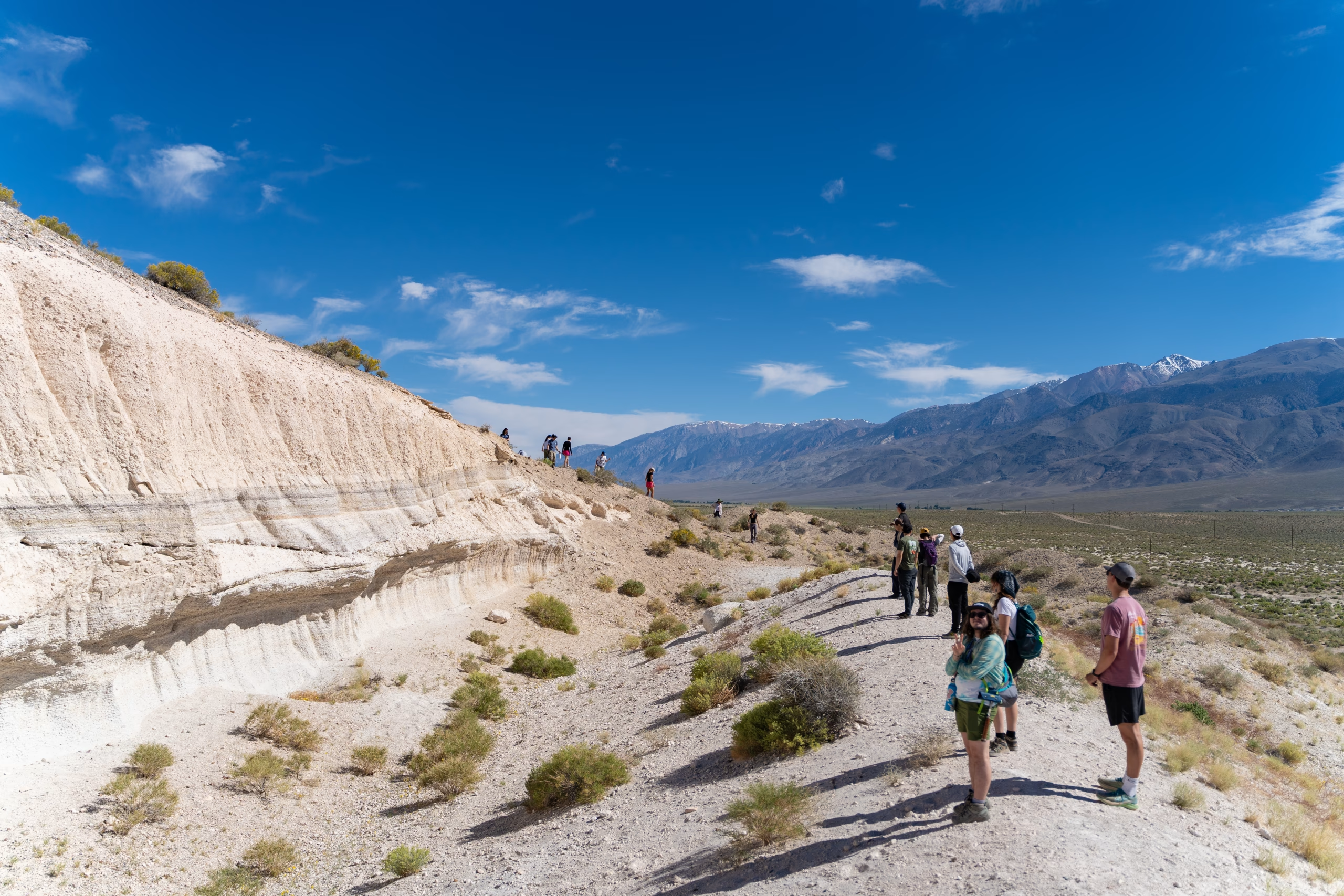
Professor Peng Ni’s hands-on class provides students with valuable experience
This spring, students in the Igneous Petrology class participated in a four-day field excursion near Bishop, California, from May 22nd to May 25th, to develop practical skills in geological identification and process interpretation
Led by Professor Peng Ni, the group was based at UCLA’s White Mountain Research Station, just east of Bishop. The region, spanning the eastern Sierra Nevada and Owens Valley, served as a rich natural laboratory for exploring a variety of volcanic and igneous features. Students investigated classic geologic landmarks such as the Bishop Tuff—formed from ashes and pyroclastic flows during the Long Valley supervolcano eruption 760,000 years ago—along with active hot springs, the Big Pine volcanic field, the relatively young Obsidian Dome (around 600 years old), and extensive granodiorite exposures.
“Field-based classes like this are crucial for students because they provide hands-on learning experiences that go far beyond the classroom,” said Ni. “By directly observing and analyzing rocks and landscapes in their natural setting, students develop practical skills in identifying geological features and interpreting earth processes.
In the field, students are challenged to interpret the origins of rock formations, apply the scientific method, and synthesize data from multiple sources while gaining experience working collaboratively in a scientific context.. These analytical skills are essential for preparing students to tackle complex questions both in academia and in the workforce.
Participation in fieldwork is also crucial in preparing students for a wide range of important geoscience careers such as environmental consulting, resource management, and geological research.
While it may sound like a niche discipline, Igneous Petrology addresses many of society’s urgent challenges. Understanding volcanic activity is key to predicting natural disasters such as eruptions and earthquakes. The field also informs resource management, including mineral extraction and groundwater protection. Furthermore, by reconstructing past climates, igneous studies contribute to climate models that help us understand and prepare for future environmental changes.
“By training the next generation of geoscientists, courses like this contribute to our collective ability to address environmental challenges, ensure public safety, and deepen our understanding of Earth’s dynamic systems,” said Ni.







